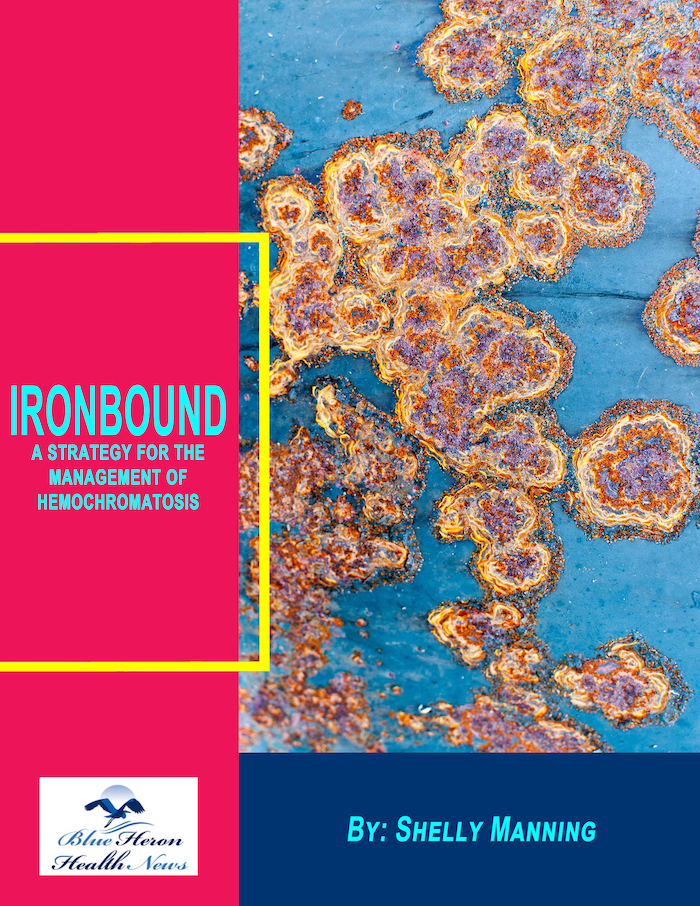
Ironbound™ A Strategy For The Management Of Hemochromatosis By Shelly Manning The 5 superfoods explained by Shelly Manning in this eBook play an important role in reducing the levels of HCT. The absorption of the excessive amount of iron by the genes of HCT can be blocked by these superfoods. In this way, the information provided in this eBook can help in resolving the problem of excess iron in your body naturally without any risk of side effects.
What are the effects of hemochromatosis on the skin?
Effects of Hemochromatosis on the Skin
Hemochromatosis, a genetic disorder characterized by excessive iron accumulation in the body, can lead to various changes in the skin. These changes are primarily due to the deposition of iron and associated metabolic disturbances. Here’s a detailed look at how hemochromatosis affects the skin, including the mechanisms, clinical manifestations, diagnosis, and management.
Pathophysiology of Skin Changes in Hemochromatosis
1. Iron Deposition in the Skin
- Mechanism: In hereditary hemochromatosis, mutations in the HFE gene (or other related genes) lead to increased intestinal iron absorption. Excess iron is deposited in various tissues, including the skin.
- Melanin Production: Iron overload can stimulate melanocytes, the cells responsible for producing melanin, leading to increased pigmentation.
2. Metabolic Disturbances
- Hormonal Imbalances: Hemochromatosis can affect the endocrine system, leading to hormonal imbalances that may influence skin changes.
- Liver Dysfunction: As the liver is often affected by iron overload, resulting liver dysfunction can contribute to skin changes due to impaired detoxification processes and altered metabolism.
Clinical Manifestations
1. Hyperpigmentation
- Description: One of the hallmark skin manifestations of hemochromatosis is hyperpigmentation, often described as a “bronze” or “slate-gray” discoloration.
- Mechanism: This hyperpigmentation is due to the combination of iron deposition and increased melanin production in the skin.
- Common Sites: The skin changes are typically most noticeable on exposed areas, such as the face, neck, forearms, and hands, as well as in skin folds.
2. Dry Skin and Itching
- Description: Patients with hemochromatosis may experience dry skin and pruritus (itching).
- Mechanism: This can be due to a combination of iron deposition, hormonal imbalances (especially involving the thyroid and adrenal glands), and liver dysfunction, which affects skin hydration and health.
3. Skin Infections
- Description: Individuals with hemochromatosis are at an increased risk for certain skin infections.
- Mechanism: Iron overload can impair immune function, making the skin more susceptible to bacterial and fungal infections. For instance, infections with Vibrio vulnificus are more common in hemochromatosis patients.
4. Koilonychia
- Description: Koilonychia, also known as “spoon nails,” is a condition where the nails become thin and concave.
- Mechanism: This can be associated with iron metabolism disorders, including hemochromatosis, and may indicate systemic involvement of the disease.
Diagnosis
1. Clinical Evaluation
- History and Physical Examination: Assess skin changes, including hyperpigmentation, dryness, and any signs of infection. Evaluate other symptoms that may indicate systemic involvement, such as fatigue, joint pain, and abdominal discomfort.
2. Laboratory Tests
- Serum Ferritin and Transferrin Saturation: Elevated levels indicate increased iron stores and overload.
- Liver Function Tests: Assess liver involvement, as liver disease can contribute to skin changes.
- Endocrine Function Tests: Evaluate thyroid, adrenal, and other endocrine functions that can affect skin health.
3. Genetic Testing
- HFE Gene Testing: Identifies mutations such as C282Y and H63D associated with hereditary hemochromatosis.
Management
1. Phlebotomy
- Mechanism: Regular blood removal to reduce iron levels. Each session removes about 500 ml of blood, containing approximately 250 mg of iron.
- Frequency: Initially weekly or biweekly until iron levels normalize, followed by maintenance phlebotomies every few months.
- Effectiveness: Reduces iron overload, which can improve hyperpigmentation and other skin symptoms.
2. Iron Chelation Therapy
- Use: For patients who cannot tolerate phlebotomy or have severe iron overload.
- Medications: Deferoxamine, deferasirox, and deferiprone, which bind to excess iron and facilitate its excretion.
- Effectiveness: Helps reduce iron levels and prevent further skin changes.
3. Symptomatic Treatment for Skin Conditions
- Moisturizers and Emollients: Help manage dry skin and itching. Products containing ingredients like urea, glycerin, and hyaluronic acid can improve skin hydration.
- Topical Steroids: Can be used for short-term relief of severe itching and inflammation.
- Antifungal and Antibacterial Treatments: Address any secondary skin infections that may arise.
4. Lifestyle Modifications
- Avoid Iron-Rich Foods and Supplements: To prevent further iron accumulation.
- Limit Alcohol Intake: To reduce the risk of liver damage and associated skin changes.
- Avoid Raw Shellfish: To reduce the risk of infections like Vibrio vulnificus, which can be severe in individuals with hemochromatosis.
5. Regular Monitoring and Follow-Up
- Monitoring Iron Levels: Periodic assessment of serum ferritin, transferrin saturation, and liver function tests.
- Screening for Complications: Regular screening for systemic complications of hemochromatosis, including liver disease, diabetes, and joint problems.
Conclusion
Hemochromatosis can significantly affect the skin, leading to hyperpigmentation, dryness, itching, increased susceptibility to infections, and koilonychia due to iron overload. Early diagnosis and effective management, including phlebotomy, iron chelation therapy, symptomatic treatment, and lifestyle modifications, are crucial to prevent or mitigate skin changes. Regular monitoring and tailored treatment strategies can help manage symptoms, improve skin health, and enhance the quality of life for individuals with hemochromatosis.
Ironbound™ A Strategy For The Management Of Hemochromatosis By Shelly Manning The 5 superfoods explained by Shelly Manning in this eBook play an important role in reducing the levels of HCT. The absorption of the excessive amount of iron by the genes of HCT can be blocked by these superfoods. In this way, the information provided in this eBook can help in resolving the problem of excess iron in your body naturally without any risk of side effects.
